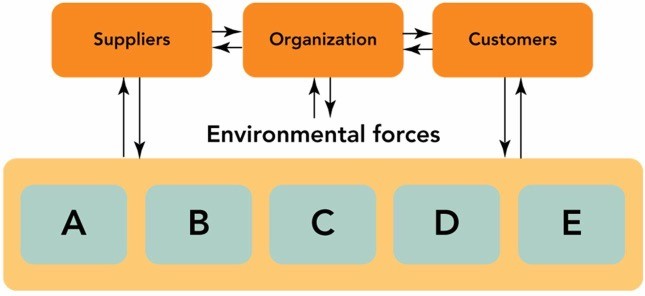 Figure 3-1Using Figure 3-1 above, identify and explain the five environmental forces (A, B, C, D, and E) that affect an organization.
Figure 3-1Using Figure 3-1 above, identify and explain the five environmental forces (A, B, C, D, and E) that affect an organization.
What will be an ideal response?
Environmental trends typically arise from five sources: (1) social, (2) economic, (3) technological, (4) competitive, and (5) regulatory. Social forces (A) include the demographic characteristics of the population and its values. Economic forces (B) include the income, expenditures, and resources that affect the cost of running a business and household. Technological forces (C) include the inventions or innovations from applied science or engineering research. Competitive forces (D) include the alternative firms that could provide a product to satisfy a specific market's needs. Regulatory forces (E) include the restrictions state and federal laws place on business with regard to the conduct of its activities.
You might also like to view...
A manufacturing company has a beginning finished goods inventory of $28,300, cost of goods manufactured of $58,500, and an ending finished goods inventory of $27,600. The cost of goods sold for this company is:
A. $86,100. B. $2,600. C. $114,400. D. $57,800. E. $59,200.
When preparing to send a message, what should be determined?
A) Will anything change as a result of the message? B) Is the purpose realistic? C) Is the time right? D) Is the purpose acceptable to the organization? E) Is the message clear and meaningful?
"The amounts obtained for cost of goods sold and ending merchandise inventory are always the same for FIFO perpetual and FIFO periodic." Is this statement TRUE? Why or why not?
What will be an ideal response?
The quick ratio and the current ratio are measures of short-term debt-paying ability
Indicate whether the statement is true or false